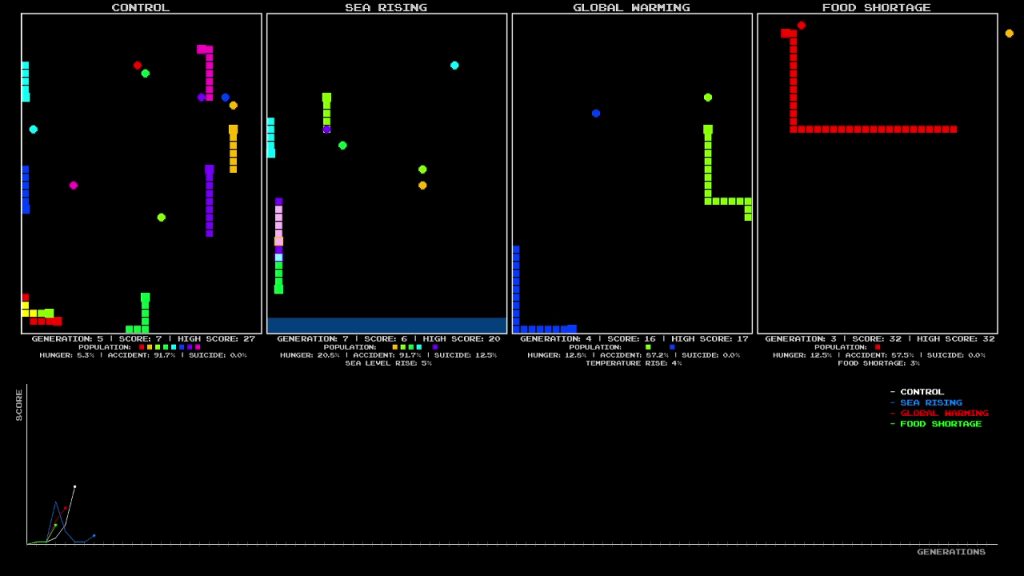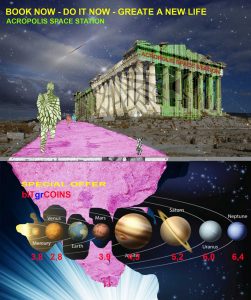
Climate snake

“Climate Snake” is a generative video/game installation inspired by the classic arcade video game “Snake”. Based on genetic algorithms and neural networks (AI), the system creates a generation of snakes that learn to eat apples and survive. As the snakes die and new generations are created, the snakes evolve through genetic algorithms (natural selection, crossover, and mutation) and develop intelligence and experience based on neural networks (an AI method based on the neurons in a biological brain). The installation creates four independent worlds where snakes are born and learn to survive. The first world is the control world where there are no threats from climate change. In the second world, the snakes experience the rise of the sea level. As generations pass, their world is flooded with water and the snakes try to survive in a limited space. In the third world, the temperature is rising as a result of global warming. This creates a hotter environment that affects and reduces the life span of the snakes. In the fourth and last world, there is increasing food shortage (as a result of climate change). Some snakes are born without apples to eat and die. kranidiotis.gr/climate-snake/
Yiannis Kranidiotis (GR)
Yiannis Kranidiotis is an artist whose work explores the relationship between science and art using mainly light, motion and sound to create spaces and experiences where all coexist and interact. He is interested in physical phenomena like the harmonic oscillation, the natural repeatability and the wave movement and also in exploring and transforming scientific data, like the properties of the exoplanets or the solar wind. Climate change and the increasing pollution of the planet with plastic are issues that also affect his practice. Many of his works include motion and interaction where others include data processing and sonification methods. This requires cross-disciplinary work with sound, visual arts, coding, electronics, and physics. His work has been presented at many festivals and exhibitions in Greece and abroad, while many magazines and websites have published articles about his work.. He has a BS in Physics from the University of Patras and an M.Sc. in Optics from Essex University. Website: kranidiotis.gr




